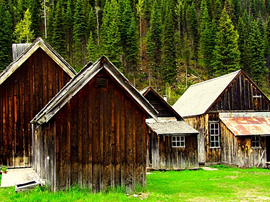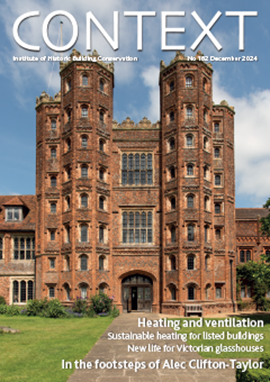Walls of Containment: the architecture and landscapes of lunacy

|
| Walls of Containment: the architecture and landscapes of lunacy, Patrick Quinlan, UCD Press, Dublin, 2021, 288 pages, colour and black-and-white illustrations, hardback. |
It was the writer’s work as an architect based in London that first attracted my attention and led me to discover his research on Irish asylums. Walls of Containment is a classic, which developed from a master’s degree in 2014 covering the heritage of buildings constructed as places of refuge for victims of mental health issues. A PhD is now registered by way of continuation.
Covering all periods from the beginnings of the asylum system in 1814 to around 2014, the book covers the various phases of architectural development as they were played out against political and religious changes sweeping the island of Ireland during its turbulent 19th- and 20th-century history. David Killeen provides a photographic record of the surviving structures in colour. These pictures accompany a wealth of plans, maps and archive photos that bring the text vividly to life. Book lists follow, with all the other elements of a serious, well-researched and broad study.
In the UK many workhouses and other such buildings have been listed and most local authorities have evidence of walls of containment in their district. My own house stands across the road from a future development site where Italian and German prisoners of war were held in the 1940s during an almost forgotten episode. Nearby are more remains of a former workhouse that was eventually converted into flats or second homes, and a former isolation hospital situated deep in the woods, where tuberculosis was treated in buildings designed by a young Charles Holden.
‘The Big House’ could once have been found in most Irish cities and towns, or at more isolated spots where land was available for massive buildings. The population in care reached a height of about 20,000 at its peak in 1914 until progress in social care and pharmacology led to a slow, protracted decline in numbers. A further 100 years would pass before we reach the current position with the buildings now abandoned, demolished or repurposed.
Quinlan takes us carefully through the whole, sad story of ‘the most solitary of afflictions’, and its results in architecture and preservation. The earliest structures were rigidly planned with male and female segregation, leading to an obsessive symmetry in layout, with a Master’s House at the focus. As the 19th century progressed, other layouts came in and out of fashion. The old houses of ‘lunacy’ became regarded as being too much like prisons, with their rows of cells along the sides of corridors. When allowed, other inmates were given dormitories in which to sleep, but the hours of confinement were long.
Not only are we presented here with a stunning volume of history but Quinlan’s formula of 10 introductory chapters, each dealing with a phase of Irish hospital theory and practice, followed by 29 case studies in which single sites are thoroughly discussed and illustrated, provides an ideal formula. It brings a massive subject within the reader’s grasp.
Other topics might benefit by this treatment: missions to seamen, for example? The taverns and hotels of the temperance movement? Hostels of all types once existed for a transient workforce and their buildings deserve attention. Each is almost global in extent, but comes from the opposite end of the social scale from the stately homes, city mansions or great churches that are the normal subject of architectural history publication.
This article originally appeared as ‘Solitary afflictions’ in the Institute of Historic Building Conservation’s (IHBC’s) Context 175, published in March 2023. It was written by Graham Tite, conservation officer employed under contract.
--Institute of Historic Building Conservation
[edit] Related articles on Designing Buildings
IHBC NewsBlog
200th Anniversary Celebration of the Modern Railway Planned
The Stockton & Darlington Railway opened on September 27, 1825.
Competence Framework Launched for Sustainability in the Built Environment
The Construction Industry Council (CIC) and the Edge have jointly published the framework.
Historic England Launches Wellbeing Strategy for Heritage
Whether through visiting, volunteering, learning or creative practice, engaging with heritage can strengthen confidence, resilience, hope and social connections.
National Trust for Canada’s Review of 2024
Great Saves & Worst Losses Highlighted
IHBC's SelfStarter Website Undergoes Refresh
New updates and resources for emerging conservation professionals.
‘Behind the Scenes’ podcast on St. Pauls Cathedral Published
Experience the inside track on one of the world’s best known places of worship and visitor attractions.
National Audit Office (NAO) says Government building maintenance backlog is at least £49 billion
The public spending watchdog will need to consider the best way to manage its assets to bring property condition to a satisfactory level.
IHBC Publishes C182 focused on Heating and Ventilation
The latest issue of Context explores sustainable heating for listed buildings and more.
Notre-Dame Cathedral of Paris reopening: 7-8 December
The reopening is in time for Christmas 2025.
Stirling Prize-winning Salford building to be demolished
The Centenary Building will be bulldozed as part of the wider £2.5bn Crescent regeneration project.
















